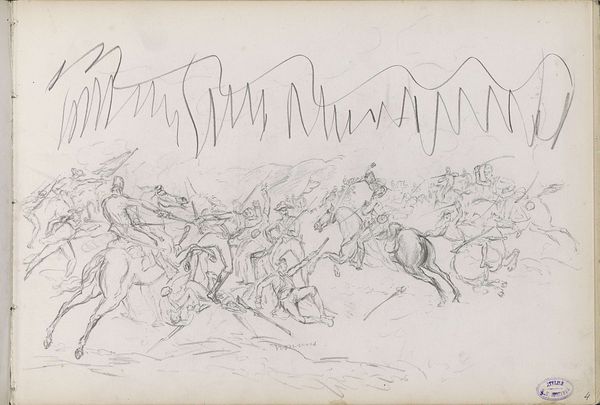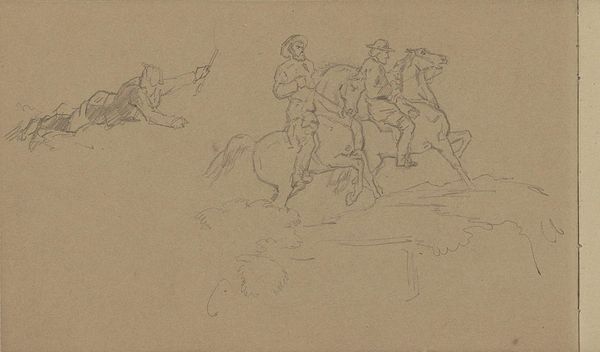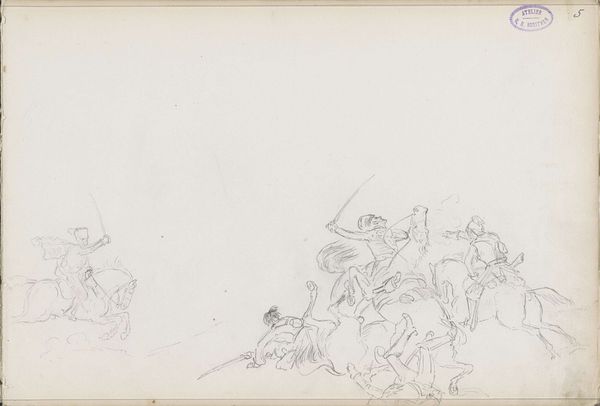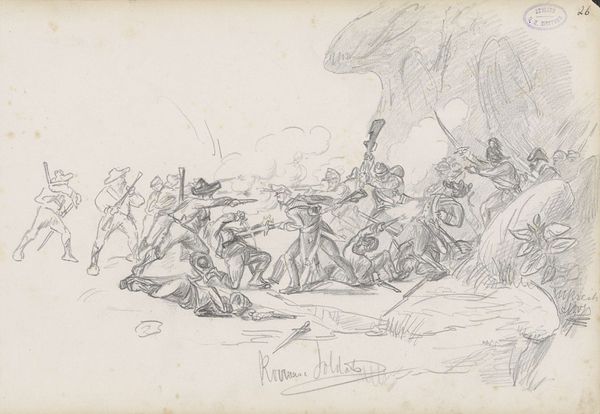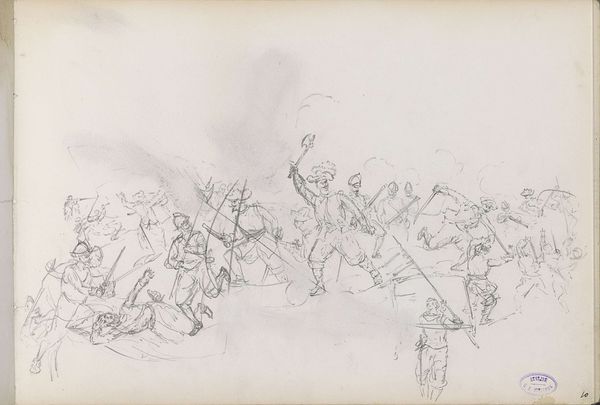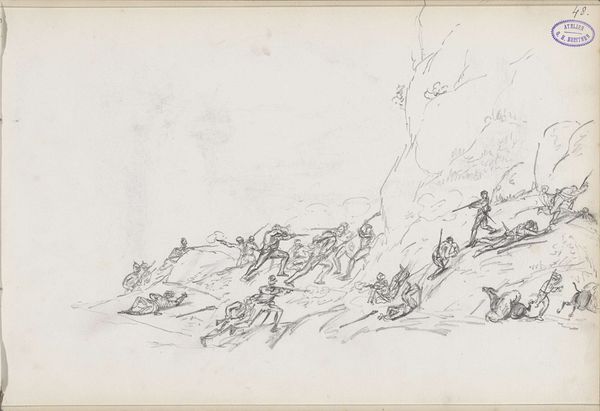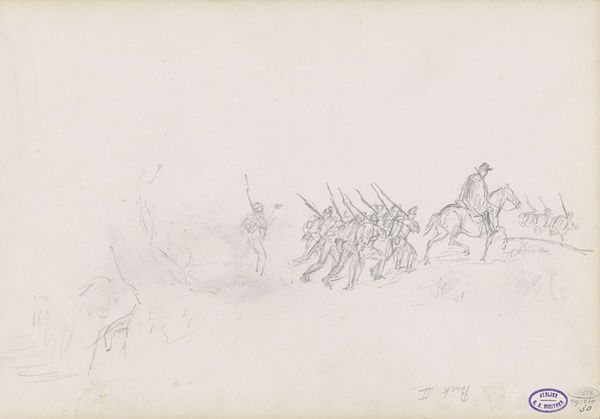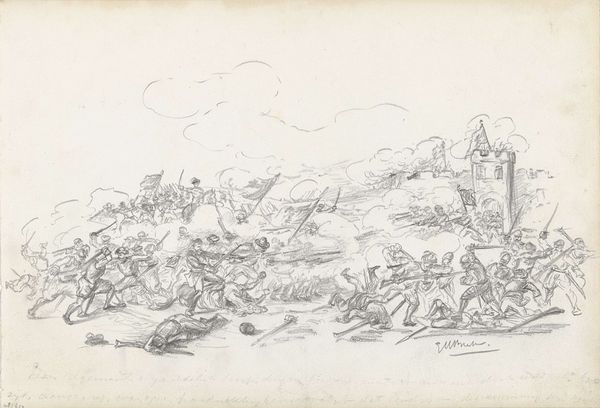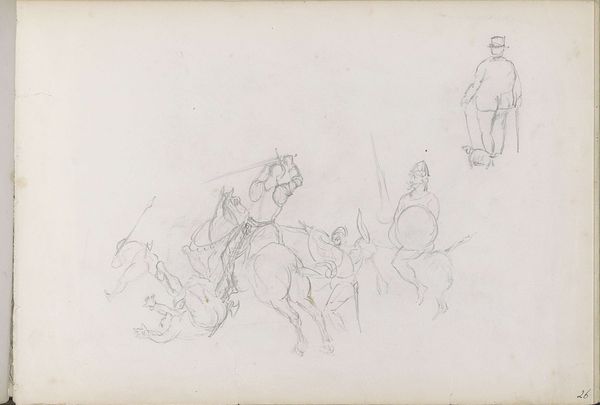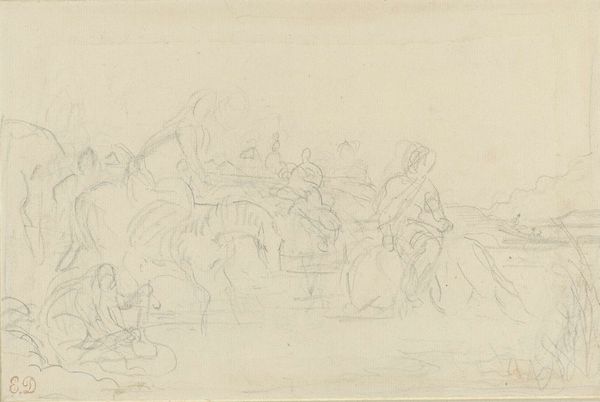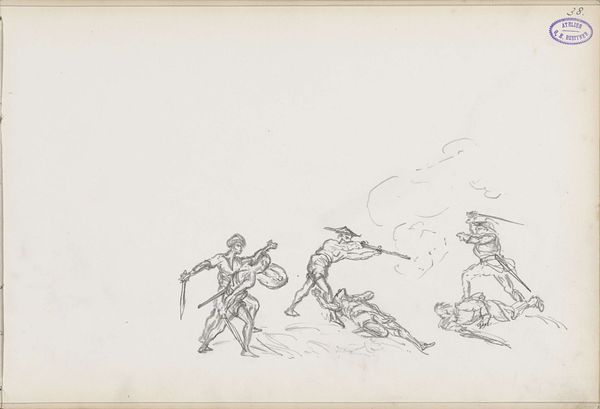
drawing, pencil
#
drawing
#
pencil sketch
#
landscape
#
figuration
#
pencil
#
horse
#
line
#
genre-painting
#
history-painting
Copyright: Rijks Museum: Open Domain
Editor: This is George Hendrik Breitner’s pencil drawing, "Strijdende soldaten, te voet en te paard," from 1873, currently held at the Rijksmuseum. It looks like a bustling scene from a historical battle, almost a rough draft for a much larger painting. What strikes me is the energy captured with just a few lines. How do you interpret this work? Curator: Looking at this drawing, it’s interesting to consider Breitner’s position in late 19th-century Dutch society. Remember that Breitner, although known for capturing modern life in Amsterdam, also engaged with historical and genre scenes. This drawing is particularly fascinating because it demonstrates the fascination with military subjects, perhaps reflecting an interest in national identity or historical narratives which were being taught at the time. Editor: So, this is less about depicting reality and more about constructing an idea? Curator: Precisely. What visual elements catch your attention, and how might they relate to the popular sentiment surrounding conflict? Is there something particularly heroic or is he adopting a certain tone with this image? Editor: I notice the chaotic composition, all these lines give the impression of disarray and action. I suppose there is nothing particularly "heroic" in the traditional sense - most faces are obscured, and the drawing has more to do with movement than with individual characters. It challenges those heroic notions of the wars. Curator: Exactly! Think about the official military art of the time versus Breitner's personal vision in a sketch. Is it intended to glorify battle, or is it a study in organized chaos and the role of Dutch history within art? The contrast itself reveals a great deal about the changing attitudes toward conflict and nationalism at that time. It could be argued it critiques militarism by stripping away grand illusions. Editor: That’s a perspective I hadn't considered. I initially saw it as a simple study but understanding its historical context provides a more relevant message regarding militarism. Thank you. Curator: And seeing that shift in historical context is where our appreciation broadens. The power of art, isn’t it?
Comments
No comments
Be the first to comment and join the conversation on the ultimate creative platform.
